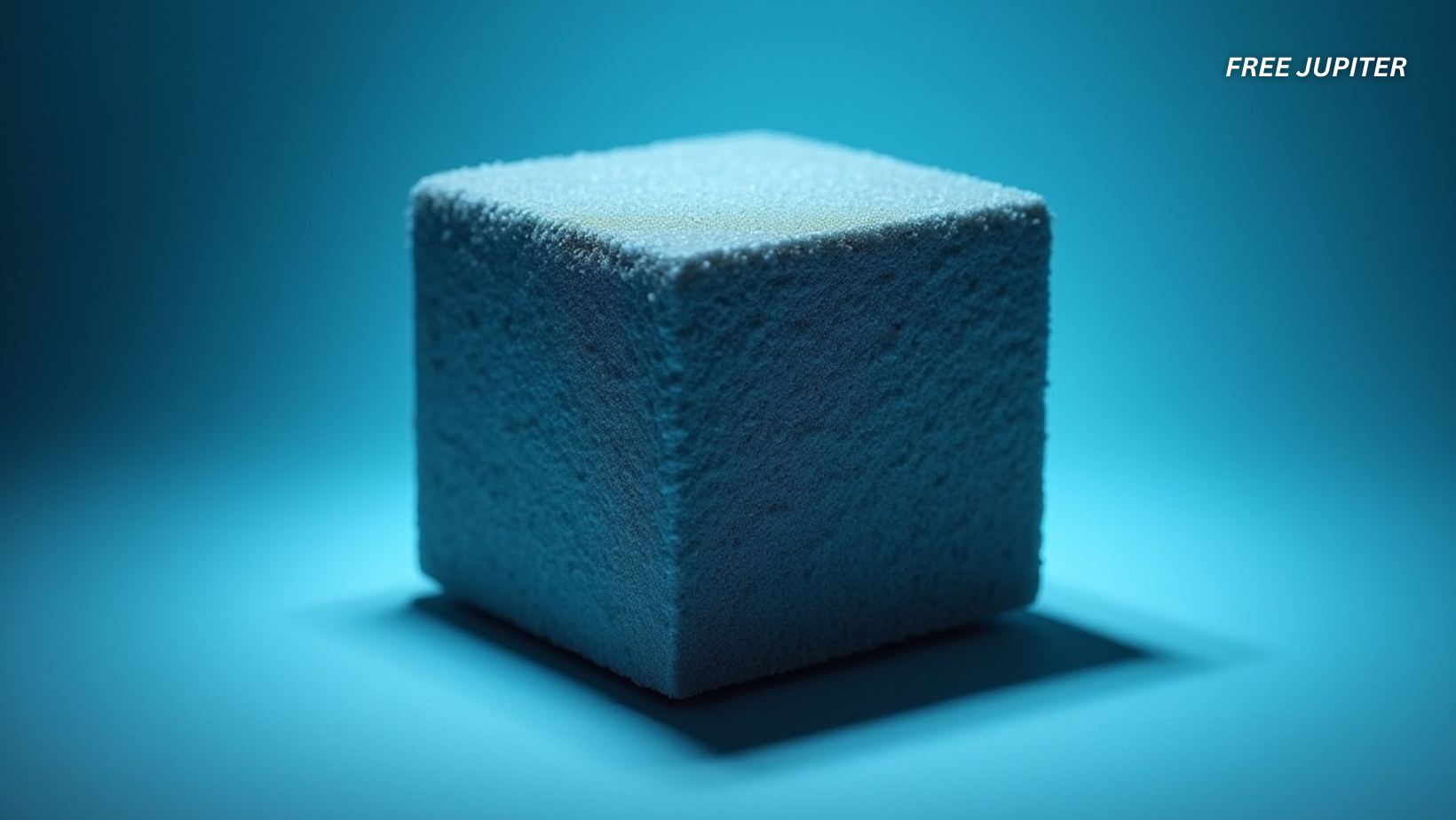Science has a way of surprising us when we least expect it. One day, steel is the go-to symbol of toughness, and the next, researchers announce that artificial intelligence (AI) has helped invent something that may outdo it—while also being as light as a puff of foam.
This breakthrough combines the brainpower of AI, the precision of 3D printing, and the creativity of engineers who dared to ask, “What if we could have both strength and lightness?” The result is a futuristic material that could reshape entire industries—from airplanes and spacecraft to prosthetics and medical implants.
And yes, it really is lighter than it sounds.
Why This Matters: The Constant Battle Between Weight and Strength
In engineering, strength usually comes with a price: heaviness. Steel is strong, but it’s heavy. Foam is light, but it can’t exactly hold up a bridge. For decades, engineers have been trying to find that sweet spot—a material that resists stress and pressure without dragging along extra weight.
The reason this balance is so important comes down to efficiency. Think about cars, planes, or rockets. The lighter the structure, the less fuel they need to move. Less fuel means fewer emissions and lower costs. In a world that’s constantly trying to improve energy efficiency, shaving off even a small amount of weight can add up to huge savings.
So, when a material stronger than steel but lighter than foam appears, industries take notice.
Read more: AI Is Learning to Decode Animal Speech — Could Humans Eventually Talk With Them?
How AI Entered the Picture
Traditionally, designing new materials has been a mix of guesswork, trial and error, and long experiments. But AI changes the game.
Researchers began this project by running computer simulations of tiny structures called lattices. A lattice is a repeating pattern, sort of like scaffolding, only on a microscopic scale. The idea was to figure out which shapes could spread out stress evenly so they wouldn’t collapse under pressure.
Here’s where AI shined. Instead of just copying old designs, it actually learned which tweaks made a structure stronger and which made it weaker. Over time, it came up with new shapes—ones that had never been considered before. It’s a bit like having an apprentice who doesn’t just follow your instructions but starts offering clever suggestions of their own.
As Peter Serles from Caltech explained, the AI wasn’t bound by human imagination. It invented entirely new geometries, proving that even in materials science, computers can think outside the box—or in this case, outside the lattice.
The Magic of Nano-Architecture
So what makes this new material so powerful? The secret is in its nano-architecture.
Instead of being solid all the way through, the material is made up of carefully arranged microscopic patterns. Imagine a honeycomb structure: it looks delicate, but bees rely on it to hold honey without collapsing. The same principle applies here, except on a scale so small you’d need special equipment just to see it.
This architecture allows the material to carry loads far heavier than its own weight would suggest. It’s like having the skeletal strength of a skyscraper hidden inside something that feels lighter than styrofoam.
Printing the Impossible: How 3D Printing Made It Real
Coming up with shapes on a computer is one thing—actually building them is another. That’s where 3D printing enters the story.
Using an ultra-precise 3D printer, researchers created tiny lattice structures out of polymers. But they didn’t stop there. These lattices were then “baked” at high temperatures, leaving behind pure carbon. The end product was a carbon nanolattice: a skeletal structure tough enough to withstand high stress without falling apart.
3D printing was the unsung hero here. Ordinary manufacturing methods can’t easily carve out such intricate designs, especially at microscopic scales. But with modern printers, scientists can now bring to life shapes that once only existed in simulations. It’s like sculpting with atoms instead of clay.
Read more: Scientists Invent Smart Tooth That Grows Into Your Gums And Connects To Nerves Like the Real Thing
Why the Aerospace Industry Is Paying Attention
When it comes to airplanes, helicopters, and spacecraft, weight isn’t just a detail—it’s everything. Every extra pound requires more fuel to lift, and more fuel means higher costs and more emissions.
Professor Tobin Filleter from the University of Toronto, who co-led the project, believes this new material could revolutionize aerospace engineering. Imagine replacing just 10 kilograms of titanium with this lightweight alternative. The result? A yearly fuel savings of around 80 liters. That may not sound huge on its own, but multiply it across hundreds of flights, fleets of planes, and years of operation, and the numbers become staggering.
In aerospace, even small gains can translate into millions of dollars saved. And when it comes to rockets and spacecraft, cutting down weight can mean the difference between a successful launch and a mission that never leaves the ground.
Everyday Applications: Cars, Medicine, and Beyond
While aerospace might be the most glamorous application, this new material could find its way into everyday life too.
- Cars and Electric Vehicles: Lighter materials mean better fuel efficiency for traditional cars and longer battery ranges for electric ones. Imagine an EV that can travel farther on the same charge simply because its frame weighs less.
- Medical Technology: Prosthetics, implants, and wearable devices could become both stronger and lighter. This would mean greater comfort for patients, without sacrificing durability.
- Renewable Energy: Wind turbines are another big winner here. Their blades need to be light yet tough enough to withstand constant winds. Materials like these could make turbines more efficient and longer-lasting.
The possibilities are vast. Anywhere weight and strength matter, this invention has a role to play.
The Next Big Challenge: Scaling It Up
For now, the material exists in small lab samples. The challenge is scaling it up to industrial levels without losing the precision that gives it its unique properties. Printing microscopic lattices on a large scale is no small feat, and cost is another hurdle.
Engineers are already working on ways to produce larger volumes, experimenting with different variations that might make production faster and cheaper. The AI, meanwhile, continues to refine its designs, learning from each round of testing to push the limits even further.
Why This Breakthrough Feels Different
This discovery isn’t just about one new material—it’s about a new way of designing materials altogether. By bringing AI into the picture, researchers can explore ideas that humans alone might never stumble upon. The collaboration between human intuition, machine learning, and advanced manufacturing signals a new era where materials can be custom-built for specific purposes.
Instead of asking, “What can we make with this material?” the question shifts to, “What material can we design to meet this exact need?” That’s a powerful change in perspective.
Read more: Engineers Create A Self-Healing Robotic Skin That Repairs On Its Own Without Human Help
A Peek Into the Future
Looking ahead, it’s not hard to imagine how this approach could ripple across industries. Cars may become lighter without compromising safety. Rockets may carry more payload with less fuel. Medical implants could last longer while feeling more natural. Even sports equipment could get a boost—lighter bikes, sturdier helmets, or tennis rackets that combine power and precision.
We’re standing at the edge of what might be a materials revolution. Just as plastics transformed industries in the 20th century, AI-designed nanostructures could define the 21st.
The research was published in Advanced Materials, a journal known for showcasing some of the most cutting-edge work in science.
Featured image: Freepik.
Friendly Note: FreeJupiter.com shares general information for curious minds. Please fact-check all claims and double-check health info with a qualified professional. 🌱










